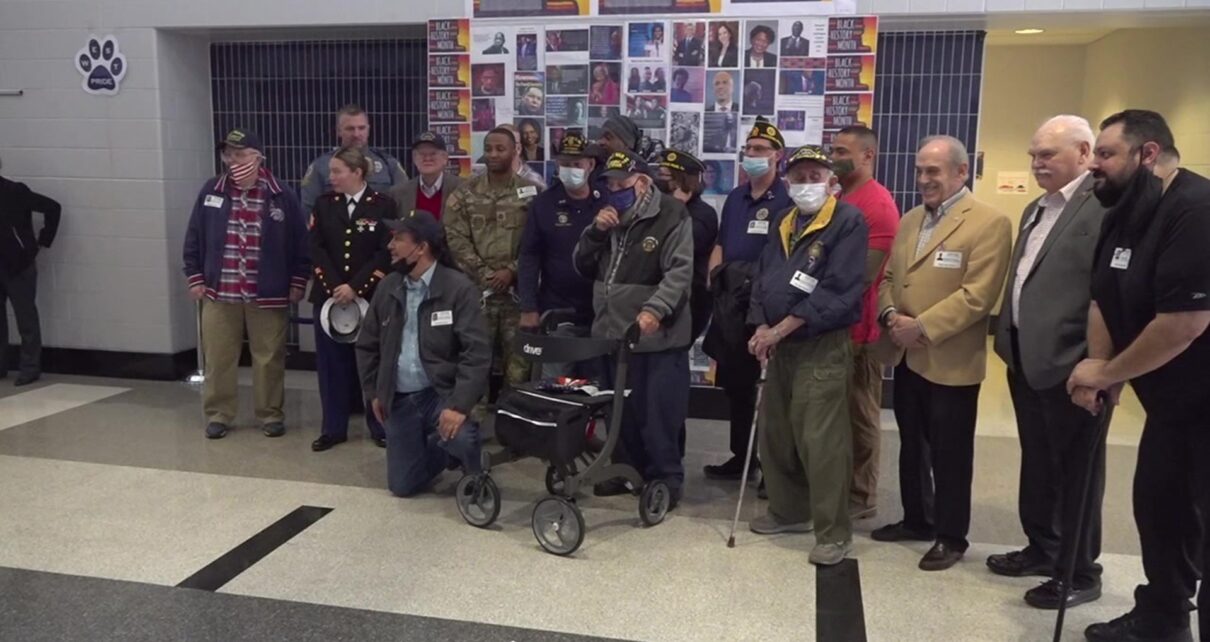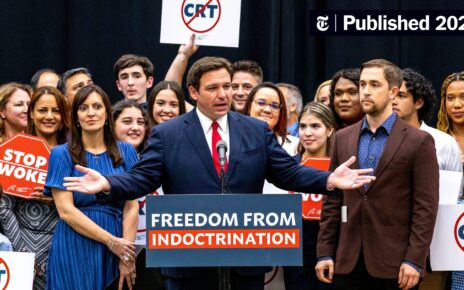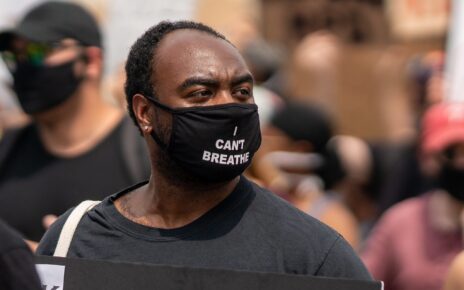The History of Fessenden Elementary School Spans 156 Years And Was Celebrated With A Legacy Day Event.
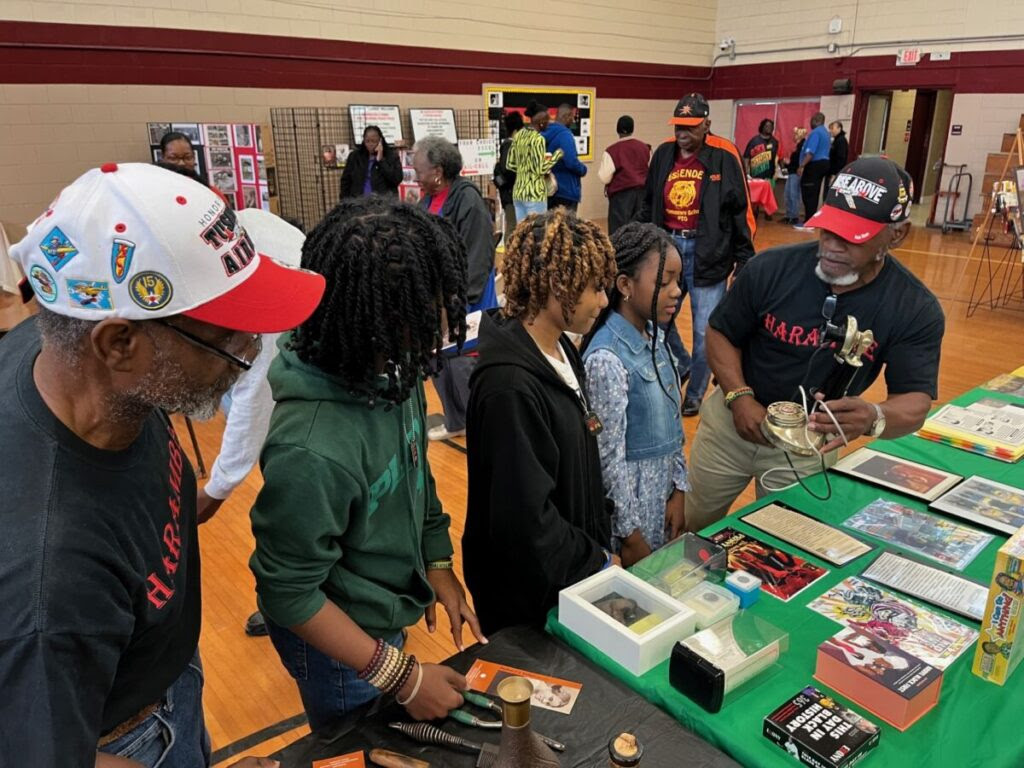
Fessenden Elementary School’s Legacy Day on Feb.18 celebrated 156 years of history and included the expansive “Pathways to Freedom Black History Exhibit,” curated by Rev. Leroy Chandler, which covered the school’s basketball court.
The school, at 4200 N.W. 89th Place, just north of Ocala, is located on the site where the families of freed slaves built the Union School in 1868 in the post-Civil War Reconstruction Era. The school reflected the “need for black student education in the racially segregated Deep South,” according to a school profile and history on its website. The school’s grounds were named a Historic District on the National Register of Historic Places by the United States Department of the Interior in 1994.
The daylong gathering was aimed at remembering the past, celebrating the present and preparing for the future. It included talks by alumni, current staff and school board officials, and recognition of local Black school principals. It offered students, their families, staff and guests a look at Chandler’s extensive collection of artifacts and articles about Black history in art, war, politics, entertainment and daily life, from early tribal days in Africa to current times.
Historic school
According to the school’s history, Ferdinand Fessenden of Boston visited the Union School in 1889, supported the students’ education and helped build the school’s first two-story building. Fessenden, who died in 1899, was buried on school grounds and the school was renamed Fessenden Academy and Industrial School. In 1900, Joesph L. Wiley was named principal and the school rose in “regional prominence” as the student body grew to over 200 students. His wife, Josephine, was a teacher at the school.
By 1903 Fessenden was drawing students from long distances to the only school in the area to offer high school classes for Black pupils and Wiley soon secured a $6,500 grant from industrialists Andrew Carnegie. The funds led to the addition of several buildings that were designed by Black architects and constructed by Black workers. By 1910, the school had more than 300 students and a “successful teaching program” before Joesph L. Wiley “disappeared one day in 1915 after visiting downtown Ocala,” the online history indicates.
Following “some decline during the Depression and war years,” Marion County Schools purchased the school in 1953 and opened Fessenden High School, which “regained its reputation as a strong school for southern Black education and for producing excellent African American professionals.” In 1971, Fessenden Elementary was established, according to the history.
Legacy Day
Stacie Newmones, the current principal, said Legacy Day is about “building relationships with the community.”
Rev. Shirley Fountain, Class of 1968, served as mistress of ceremonies and members of the North Marion High School JROTC provided a color guard. Madison Huskey, the school’s confidential secretary, greeted visitors. Aaliyah McHellen and Ranaya Best, both fifth graders, gave presentations and Assistant Principal Angela Ponder also spoke to the assembly.
Francine Julius Edwards, district aide for State Representative Yvonne Hayes Hinson, delivered a message of well wishes and referred to famous inventions by Black inventors, such as the refrigerated truck, medical and computer innovations. She told the youth at the event that it is “their turn now.”
Johnny Grimes, from the Class of 1957, is president of the Fessenden Alumni Association. He said the school is “very important to Marion County” and Florida. Other alumni in attendance included Whitfield Jenkins and Linda Ward.
April Rose-McCoy, PTO Interim VP Outstanding Black Principals of Marion County Public School District, introduced School Board member Nancy Thrower to present plaques to honor 11 Black Principals for 2024. Those honored were Newmones; Dion Gary, Benard Rembert, Anna Streater-McAllister, Victoria Thomas, Diana Elysee, Traci Crawford, Shameka Murphy, Ronald Jones, Wade Martin and Jason Jacob.
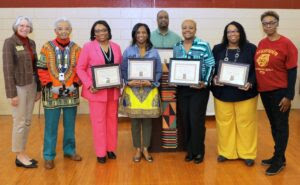
School Board member Nancy Thrower, left, is shown with principals Johnny Grimes, Anna Streater-McAllister, Diana Elysee, Ronald Jones, Stacie Newmones and Shameka Murphy, and right, Linda Ward Fessenden’s interim PTO president, during the Legacy Day event. [Photo by Cynthia Wilson Graham]
Pathways to Freedom
The “Pathways to Freedom” collection, which fills a 26-foot-long truck, was amassed over the last 20 years by Chandler, pastor of New Saint Paul Church in Flemington, in northwest Marion County, his wife Emma, and their son Cristian Chandler, who is an assistant professor of medicine at Vanderbilt University.
Leroy Chandler, who spent at least 12 years in prison ministry, said he was motivated to start the exhibit in 2003 when he was asked to speak about Black history and questioned himself as to how much he knew about the subject. He said he had the option to complain or do nothing, so he decided to start the collection. Emma Chandler said the collection was acquired from several southern states.
Breon Segree of Gainesville and his children Alexcia Shana and Breon Segree II reviewed the exhibit, which was displayed on 100 lunch tables. Alexcia enjoyed the early African musical instruments and the three took a few minutes to play an electronic game that buzzed when the player matched the correct historical figure with their role, such as Crispus Attucks was the “first person to die in the American Revolution.”
Artifacts in the collection range from African tribal art to household items like telephones and displays on personalities including poet Maya Angelou, writer Stanley “Tookie” Williams and politicians such as the late Congressman John Lewis, former President Barack Obama and Vice President Kamala Harris.
Leroy Chandler told attendees that it is important to “do better” in teaching youth about Black history. He said the exhibit is aimed at “truth and awareness.”
To learn more about Fessenden Elementary School, go to marionschools.net/fde

The Pathways to Freedom Black History Exhibit at Fessenden Elementary School on Feb. 17 [Photo by Andy Fillmore]

